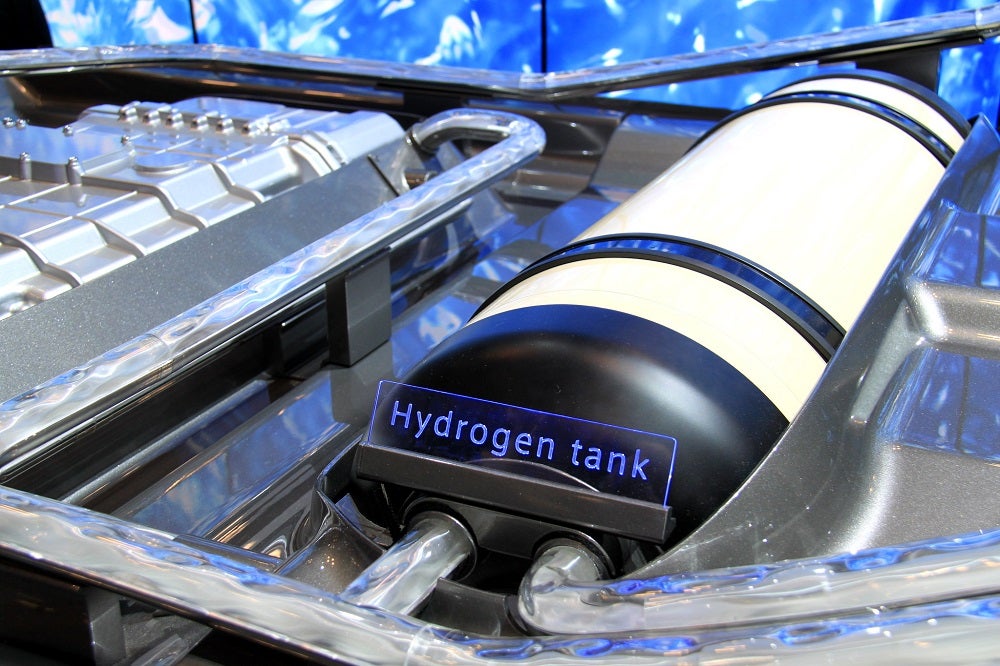
The 2020s could prove a tipping point for green hydrogen as production costs fall significantly around the world, according to a new analysis.
High hopes have been pinned on the emission-free fuel to drive decarbonisation across heavy-polluting sectors like industry and transport, by providing an alternative to traditional, carbon-intensive fuels such as diesel and petrol.
Cheaper forms of hydrogen currently exist – grey and blue – but fossil fuels are used to power the electrolysers that separate the gas from water, offsetting the environmental benefits of its end use.
Green hydrogen is produced using exclusively renewable energy sources, such as wind or solar, so the entire process is effectively carbon free.
Falling price of renewable electricity will lower production costs of green hydrogen
As the price of renewable-generated electricity continues to decline and becomes increasingly competitive with fossil fuels like coal or natural gas, the financial incentive to prioritise green hydrogen is growing stronger, allowing this nascent industry to achieve the benefits of scale – provided sufficient policy support is given.
“On average, green hydrogen production costs will equal fossil fuel-based hydrogen by 2040,” says Wood Mackenzie senior research analyst Ben Gallagher.
“In some countries, such as Germany, that arrives by 2030. Given the scale-up we’ve seen so far, the 2020s is likely to be the decade of hydrogen. Rising fossil fuel prices will boost green competitiveness, further strengthening the case for this technology in the coming years.”
According to a recent study by Wood Mackenzie, the cost of producing renewables-based hydrogen will fall by up to 64% by 2040 – although this is dependent on clean electricity prices of less than $30 per megawatt-hour (MWh) and high utilisation rates.
For an example, recently-published figures from the UK government illustrate the rapid decline in the cost of wind and solar power over the past decade, indicating that sufficiently-cheap renewable energy is on its way to support an emerging low-carbon hydrogen economy.
Analysis by think tank Carbon Brief shows UK electricity prices for offshore wind, onshore wind and large-scale solar plants are now estimated at £57 ($75)/MWh, £46 ($61)/MWh and £44 ($58)/MWh respectively.

While not yet in the sub-$30 range, these prices have fallen by roughly 50% since 2013, demonstrating the downwards trajectory that is likely to continue as these industries grow larger and fossil-based alternatives are gradually phased out.
Wood Mackenzie adds that the global project pipeline for green hydrogen has more than quadrupled in the past 10 months, growing from 3.5 gigawatts (GW) to 15GW in that time, indicating that “volumes will be large enough and stable enough for the nascent market to scale”.
By the end of this decade, the research group estimates the production cost of green hydrogen – not including transport and storage expenses – could fall by 50%.
Gallagher adds: “Even with a multitude of challenges that await the green hydrogen market, we firmly believe there will be some form of low-carbon hydrogen economy soon. Given the degree of explicit policy, corporate and social support that has blossomed in 2020, green hydrogen will successfully scale and realise huge production-cost declines.”
Demand expected to outpace supply this decade
While lower production-cost projections and a growing project pipeline are welcome news for the green hydrogen industry, its successful development remains far from guaranteed as the infrastructure and capital frameworks around it lag behind.
The Institute for Energy Economics and Financial Analysis (IEEFA) has warned of an “incredible supply shortfall” in green hydrogen by 2030, as estimated global demand of 8.7 million tonnes a year far outpaces an expected supply of just three million tonnes a year.
It adds that, despite 50 new renewables-based hydrogen projects being announced in the past 12 months, many could face delays due to “uncertain financing, cumbersome joint-venture structures, and unfavourable seaborne trade economics”.
“Governments will need to get behind these new projects and work hand-in-hand with industry as the world transitions away from fossil fuels into cleaner renewable energies,” says IEEFA analyst Yong Por.
“They need to urgently back this industry by developing policy settings encouraging private industry to invest the much-needed capital, given the industry must ‘learn by doing’. There remains ample room for more hydrogen projects to meet global demand and further policy support will be necessary to grow this nascent industry.”
Last month, the European Union announced a hydrogen strategy designed to accelerate deployment at scale across the region. It anticipates the programme will deliver up to 11 million tonnes of green hydrogen by 2030, with an overall cost estimated at €430bn.
Big infrastructure upgrades are needed
A report published earlier this year by BloombergNEF identified the need for a “huge, co-ordinated programme of infrastructure upgrades and construction” to support the rollout of green hydrogen at scale, as well as the continued use of carbon pricing and emissions regulation to ensure its competitiveness against fossil fuels.
Transport networks and storage locations are a key concern, with the study anticipating a three to four-fold expansion of the existing infrastructure footprint being necessary by 2050.
“This needs policy co-ordination across government, frameworks for private investment, and the roll-out of around $150bn of subsidies over the next decade,” explains Kobad Bhavnagri, head of special projects at BloombergNEF.
“That may sound daunting but it is not, in fact, such a huge task – governments around the world currently spend more than twice that every year on fossil fuel consumption subsidies.”
While the costs associated with green hydrogen are expected to fall in the coming years, Wood Mackenzie says other forms produced using fossil fuels are likely to increase.
Grey hydrogen, manufactured using unabated carbon fuels, is likely to be 82% more expensive in 2040 – excluding China – primarily due to expected increases in the price of natural gas. The cost of blue hydrogen, which is also produced using fossil fuels but in tandem with carbon capture technology, is expected to increase by 59% over the next 20 years.






